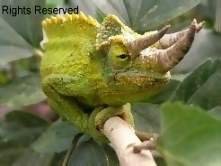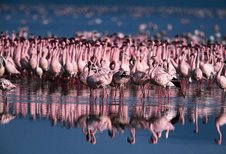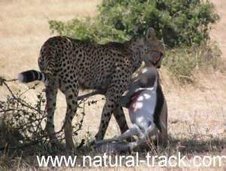Africa’s rich diversity has continued to dwindle in the recent
decades due to cocktail of factors. Even the once widely spread species
are now entering the long list of conservation concerns. One of these
species is the African giraffes. Although to many, these colorful
animals seem not to be in any need of focused conservation, statistics
and conservation research has shown that giraffes are facing increasing
pressures that have adversely affected their numbers and distribution in
Kenya and entire Africa.
There are currently a total of nine sub-species of giraffes naturally
occurring in Africa with Kenya being the only country in Africa to have
three of this sub-species. Other countries have either one or two
sub-species making Kenya a preferred epicenter for giraffe speciation.
Over the past decade, giraffe numbers in Africa have suffered at
least a 30 per cent drop in population as a direct result of habitat
encroachment, habitat loss, habitat fragmentation, severe poaching,
increasing human populations and human-wildlife conflicts and now, the
effects of climate change.
Taking examples from least endangered, The Masai giraffe (Giraffa Camelopardalis tippelskirchi)
widely occurs in southern Kenya namely; the Tsavo’s, Amboseli and the
Masai Mara ecosystems and also throughout Tanzania. The Masai giraffes
have relatively stable populations compared to the other sub-species in
Kenya, although, reports that their numbers have also suffered in recent
years have been highlighted. Currently, their surveys and recent
estimates are being compiled and hopefully some more positive news will
prevail.
Reticulated giraffe (Giraffa Camelopardalis
reticulata) the most beautiful of all the giraffe sub-species are widely
found in northern Kenya and in Somalia. Their data and compilations on
statistics and range are considered limited and incomplete, with as few
as 3,000 – 5,000 individuals remaining in the wild. This estimate
represents a small fraction of the 28,000 reported to have existed only a
decade ago. This is a clear suggestion that the sub-species have
recently suffered a major and rapid decline giving rise to concern about
its long-term persistence.
Rothschild’s giraffe (Giraffa Camelopardalis
rothschildi) is rated second most endangered giraffe sub-species in
Africa with less than 670 individuals remaining in the wild. Once
wide-ranging across western Kenya, Uganda, and southern Sudan, it has
now been almost totally eliminated from most of its former range and now
only survives in a few small, isolated populations in Kenya and Uganda.
These remaining populations are isolated from one another and are not
interbreeding.
Kenya is home to about 60 per cent of the global population of wild
Rothschild’s giraffe with Ruma National Park in Nyanza Province having
the single largest meta-population (130 individuals) in the country.
Lake Nakuru National Park has 65 individuals, Soysambu Conservancy 63,
Kigio Wildlife Conservancy 32, and Giraffe Manor-Karen, Mount Elgon
National Park, Murgor Farm in Iten, Mwea National Reserve,
Sergoit-Kruger Farm in Iten, Kitale Area Farm and Nasalot Game Reserve,
all with populations of less 20 individuals.
There is therefore a great urgency in stipulating conservation
strategies to cap further dwindling of these wonderful African
creatures.
PKP. safaris in kenya desk
Let’s Conserve Them!
Subscribe to:
Post Comments (Atom)









No comments:
Post a Comment